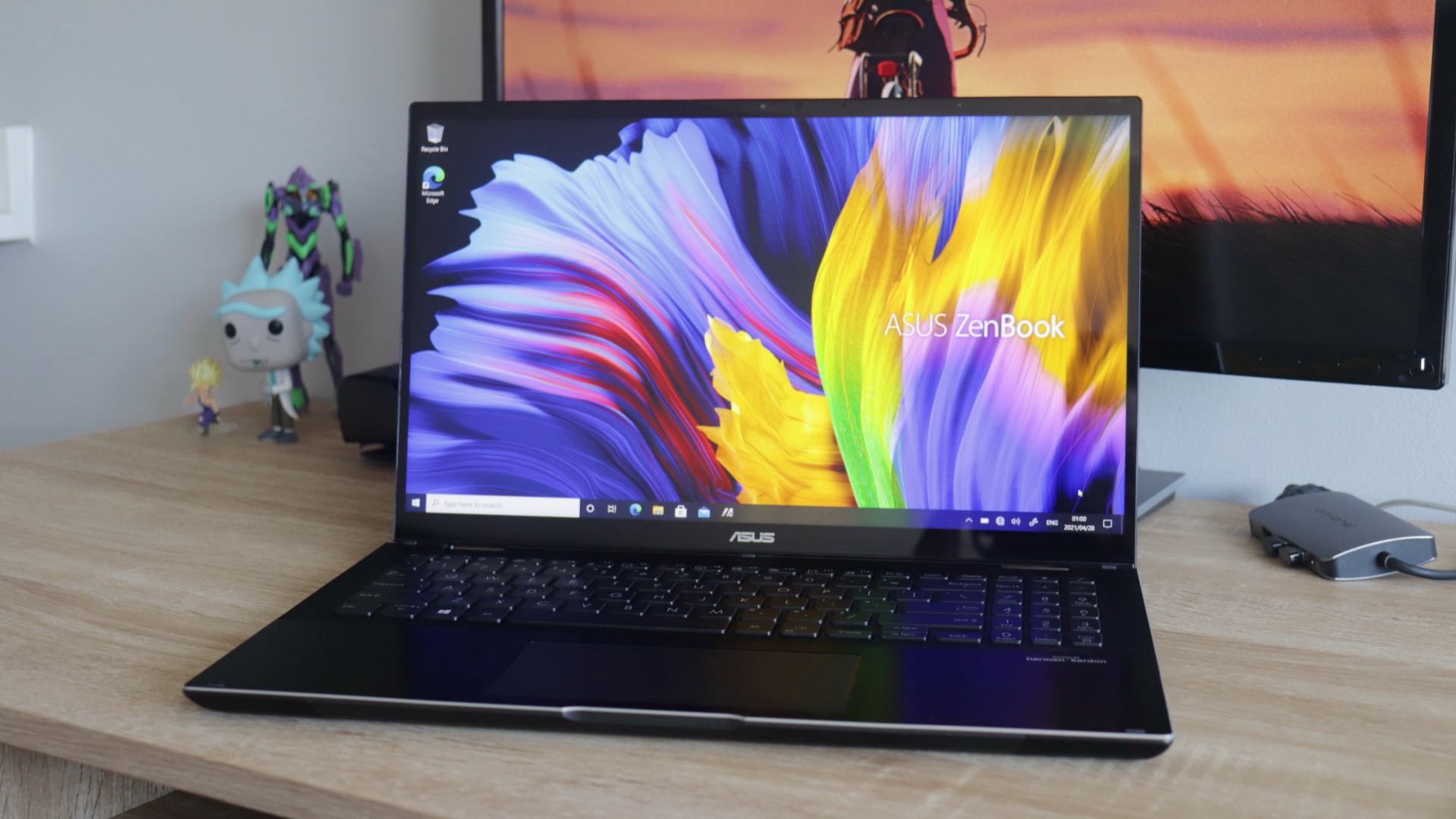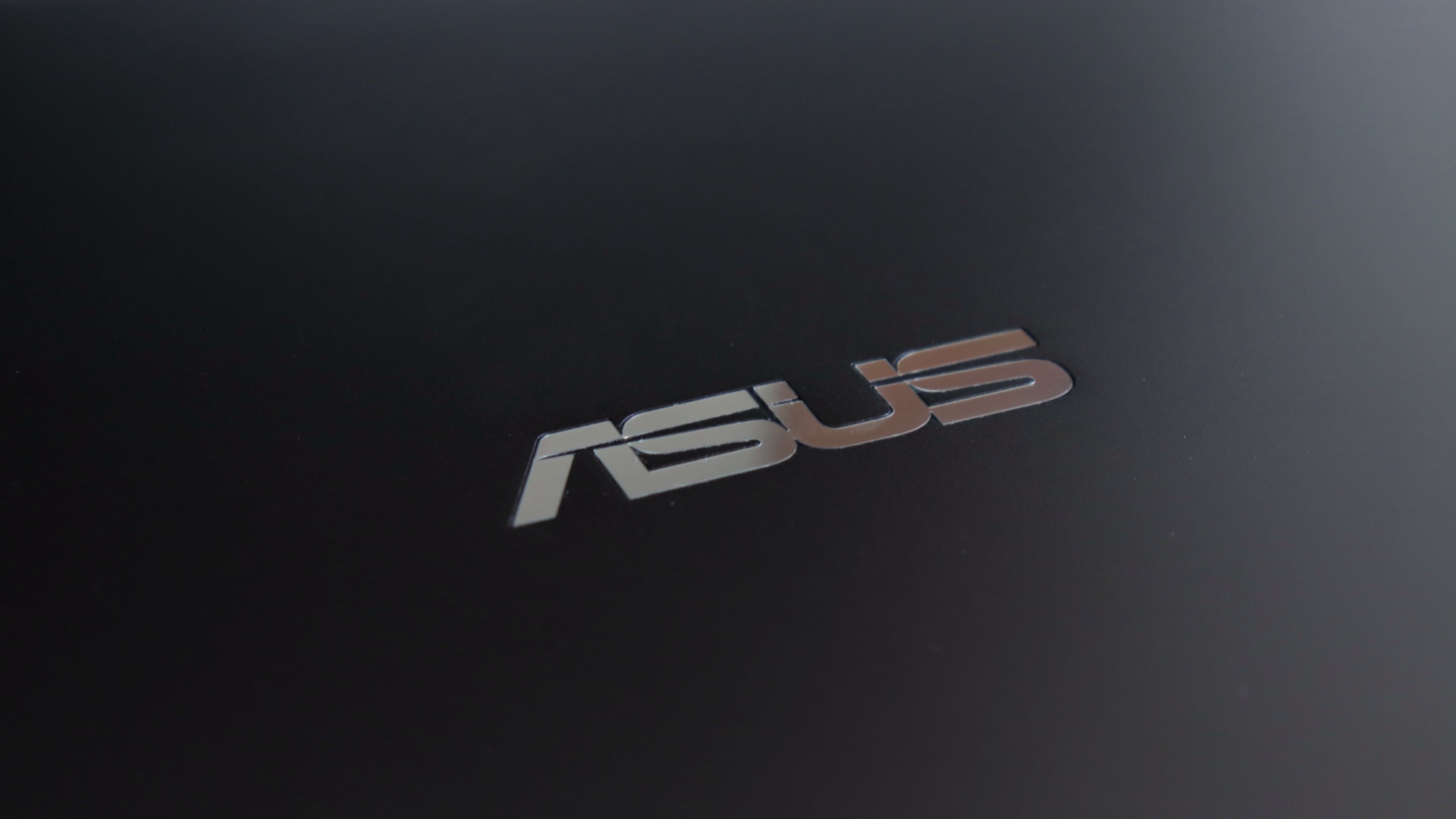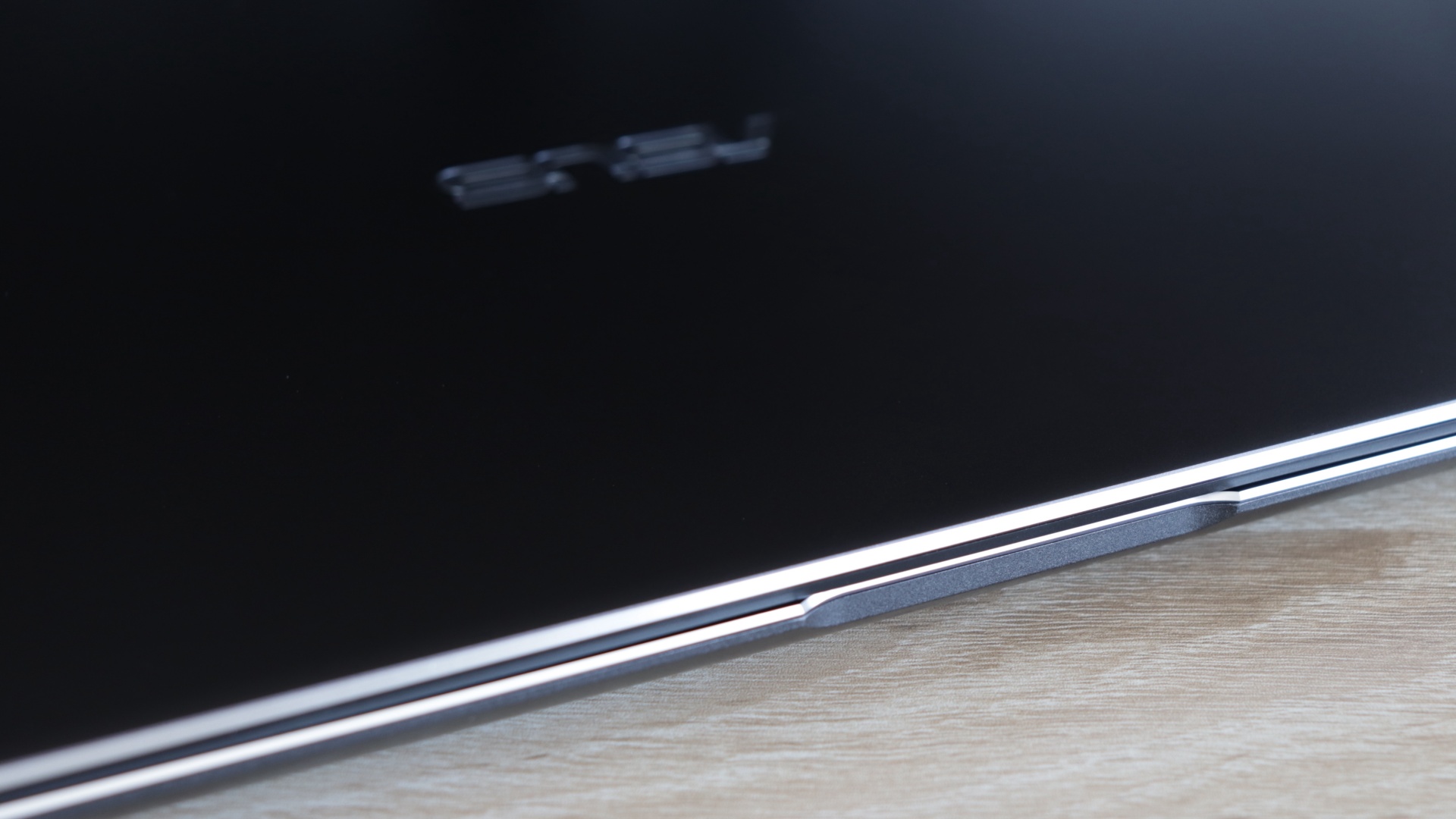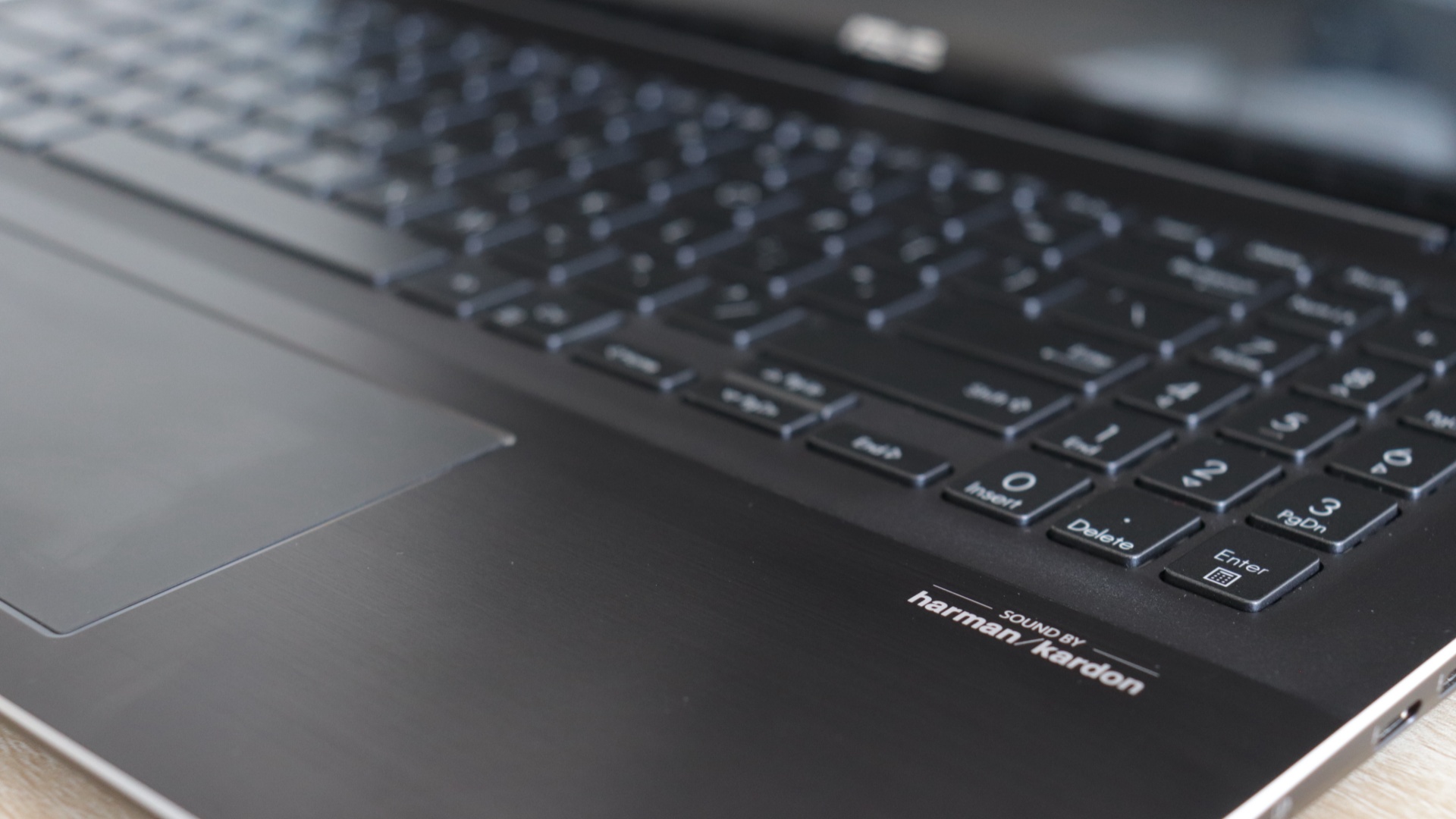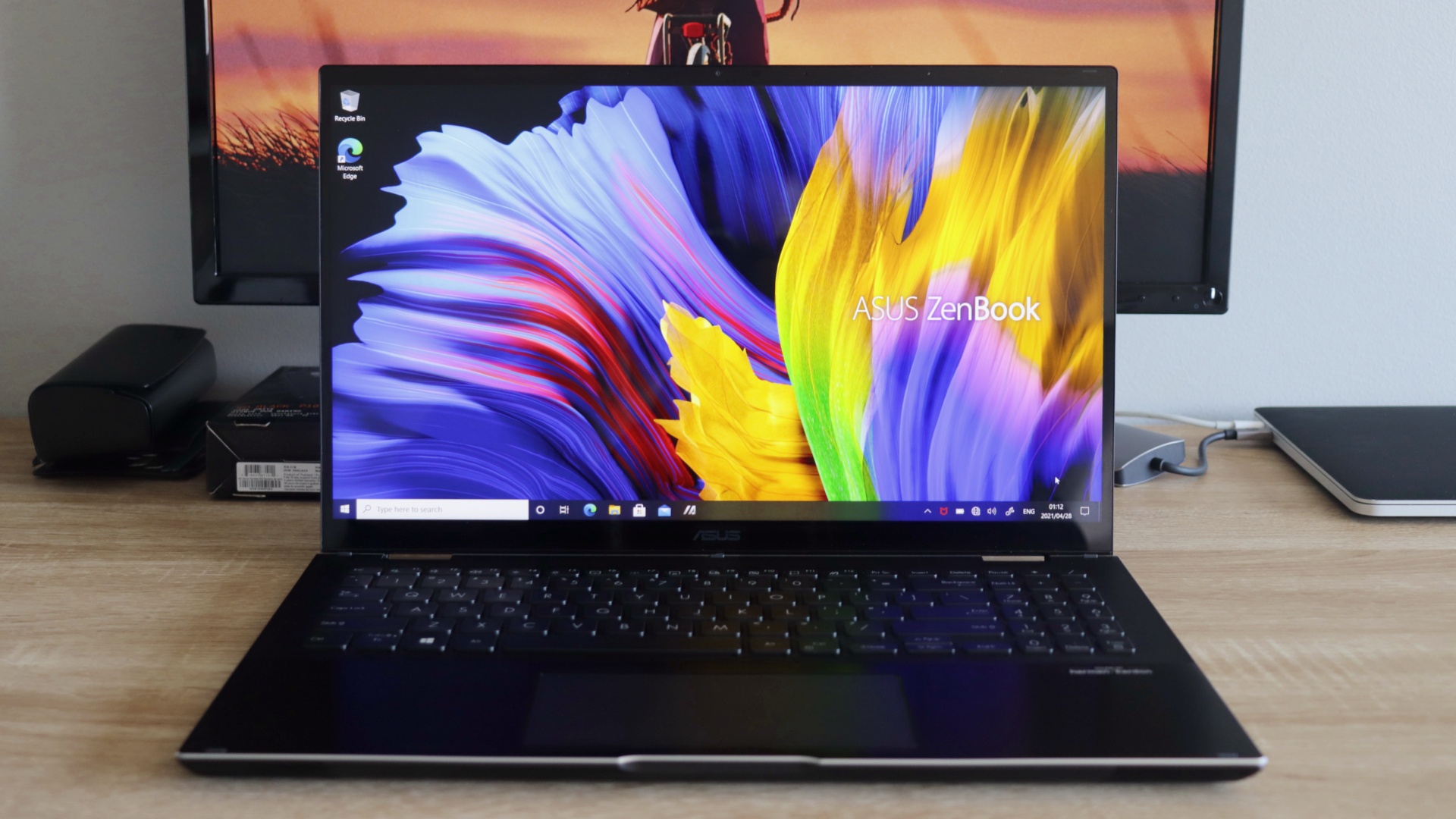It has been mentioned many a time over over the past year. The new normal has necessitated remote working or working from home as employees have needed to adjust rapidly to changes brought about by the pandemic. It means people are thinking differently about the hardware they chose to use at home, as it needs to be as powerful as the ones that would normally be used at work.
As such, upgrading to a workhorse-like Windows 10 notebook is on the cards for many.
Throwing its hat into the ring in this regard is the new 2021 model of Asus ZenBook Flip 15. Sporting the new 11th Gen Intel silicon, as well as Nvidia-powered graphics on our review model, this latest iteration of the ZenBook Flip 15 is billed as a device for processor-intensive task masters in mind.
It is also classed as a device capable of handling more creative tasks thrown its way, specifically graphic design thanks to its touch-enabled display and 360-degree vertically rotating screen.
We spent the past two weeks with the ZenBook Flip 15 (referred to as the Flip 15 from here on out), to find out if it can indeed live up to the billing that its Taiwanese manufacturer has classed it in.
A little unassuming
First, as we usually like to do, we start with the looks. On this front, Asus has kept things rather subdued. The Flip 15 does not immediately let you know that it is packing some impressive innards given its Mineral Grey coloured metal chassis. Sure, it is not small measuring in at 35.6cm wide, but this model may not be as flamboyant as some of the other premium ZenBook offerings are.
And that is perfectly fine in our books, especially as the Flip 15 will likely be desk bound for most of the day. This as it is a beefy notebook, tipping the scales at 1.90kg.
Open up the ZenBook Flip 15 and things remain relatively unspectacular. There aren’t any gimmicky elements added to the mix and the only eye catching aspect to the livery is the Harman Kardon logo next to the trackpad, letting you know the audio experience has tuned.
Asus has etched the border of the lower portion of the notebook, but other than that, frills have been kept to a minimum.
Yes, there is a generous 15.6″ display up front with a 90 percent screen-to-body ratio, but it is only once you power up the Flip 15 do things start to get interesting.
Here, the Full HD display begins to bloom to life. You also instantly recognise the fast boot time, indicating that the Windows 10 Pro operating system onboard is there for a reason.
As such, while it may not get many second glances from onlookers, the fact that it will likely be a device that does not stray far from the home, means styling is not something you need to worry about.
Hard worker
As we mentioned earlier, the Flip 15 only starts to show its worth when you begin working. On this front, the notebook is rapid. Applications and settings load with ease and the notebook feels like it’s itching to have some processor-intensive tasks thrown its way.
Even our own feelings about Windows 10’s general sluggishness are laid to rest once the Flip 15 gets going.
To confirm our suspicions, we ran it through the usual gamut of benchmarking we do for all notebooks that we review.
On the processor side of things, the results were as expected given the i7-11370H onboard, with an average of 4 950 on Cinebech. V-Ray produced similarly solid results at 3 556, with both benchmarks being on par with the impressive ZenBook Duo 14 (2021) we reviewed earlier in the year.
Where the Flip 15 surpasses its dual-screened brethren is on the graphics side of things, however, with the Nvidia GeForce GTX 1650 GPU on this review model yielding considerably better results. On the V-Ray GPU benchmark for example it registered an average score of 213 compared to an average of 74 on the Duo.
The key difference in the scores is the fact that Intel’s Xe graphics is doing the heavy lifting on the Duo, with the same option of graphics also available on the Flip 15 if you want. This therefore serves as a good showcase of the difference in graphics performance depending on which GPU you opt for.
For those who plan to do graphic design or editing work on the Flip 15, it is the Nvidia option you’ll likely want in the long run.
Tablet ready?
While the screen supports styluses and the display rotates to switch to a tablet mode, we question whether the Flip 15 is well suited to such an orientation. This namely down to its weight, which at just under two kilograms could prove unwieldy over time.
If you left the Flip 15 on a table or suitably flat surface and rotated in its display mode, roughly 270 degrees to 290 degrees depending on your angle, it would be a far better choice as the ErgoLift hinge found on the notebook is one one of the most robust and firm we’ve encountered to date, making it capable of withstanding the pressure of a stylus pushed against it, and not moving.
Either way, the Flip 15 is not our first choice when it comes to portability.
That said, the battery life on offer is solid. On this front the Flip 15 yielded roughly eight to nine hours of continuous use. While more powerful batteries are on the market, unplugged, the Flip 15’s six-cell Lithium-Ion battery setup should prove more than capable when an unexpected bout of loadshedding hits.
Final verdict
The Asus ZenBook Flip 15 retails for a recommended R31 999 for the Nvidia-specced model. That is not cheap by any stretch, but this notebook is not short when it comes to taking care of the essentials. When you add its large display, solid battery life, bevy of ports, as well as its solid CPU and even better GPU performance to the mix, the ZenBook 15 Flip is well appointed.
If you are in the market for a Windows 10 notebook that you plan to leave desk bound for most of its life, the ZenBook Flip 15 makes a good case for itself.

